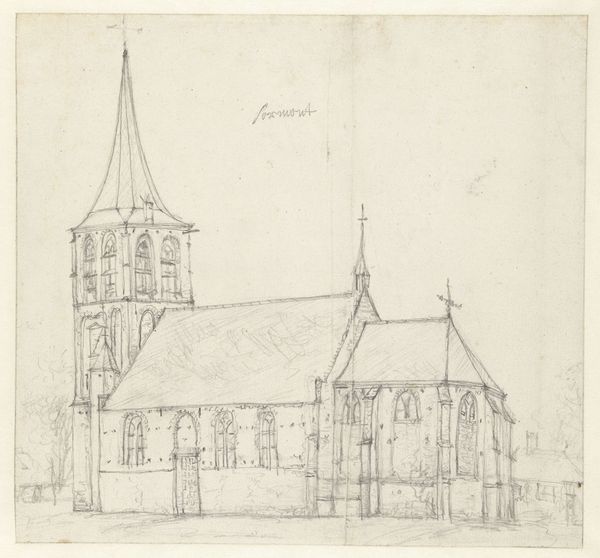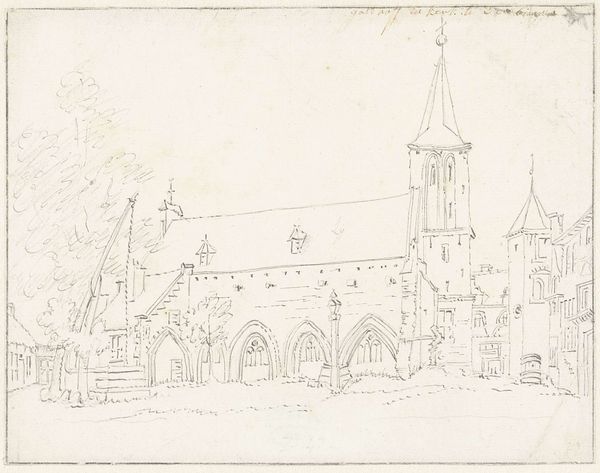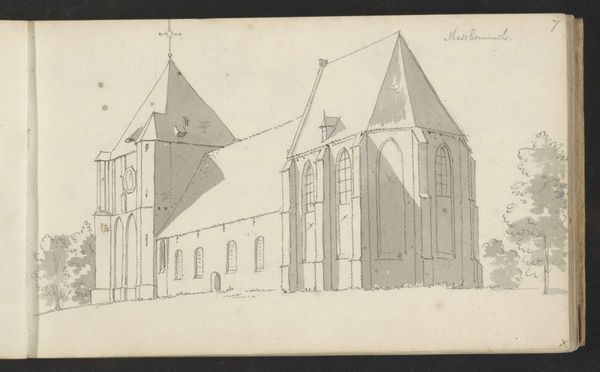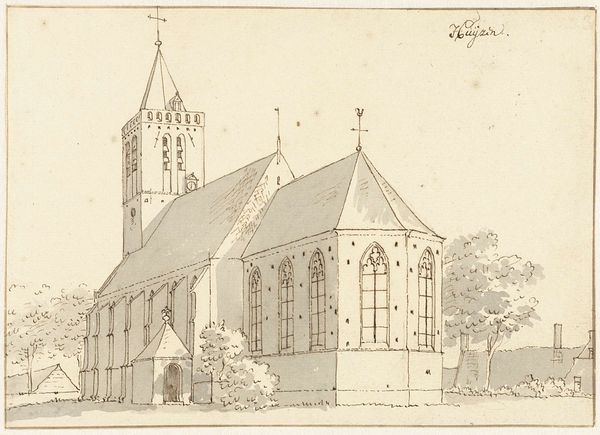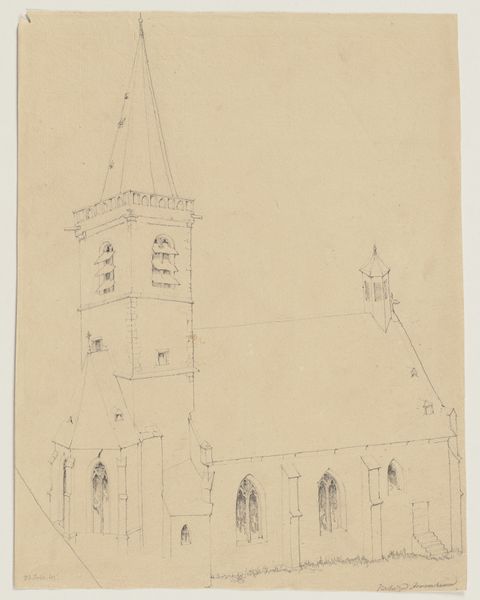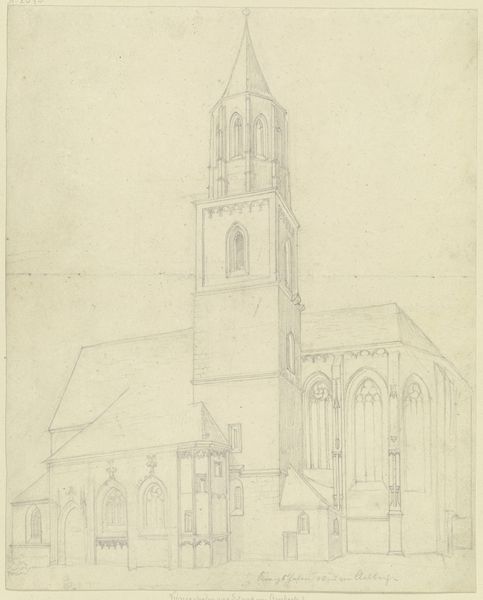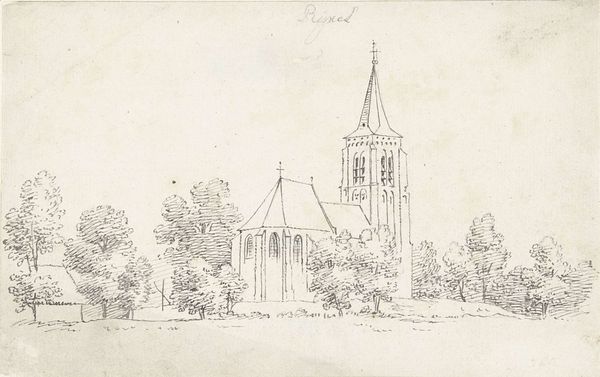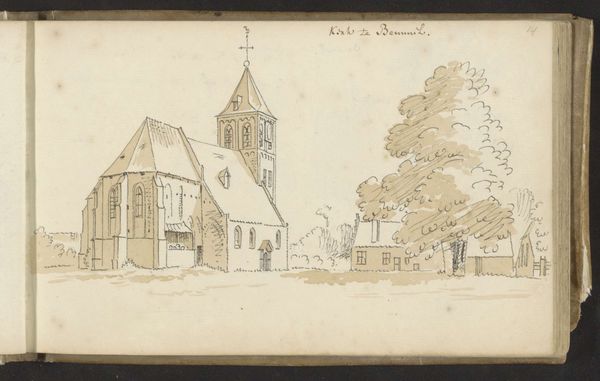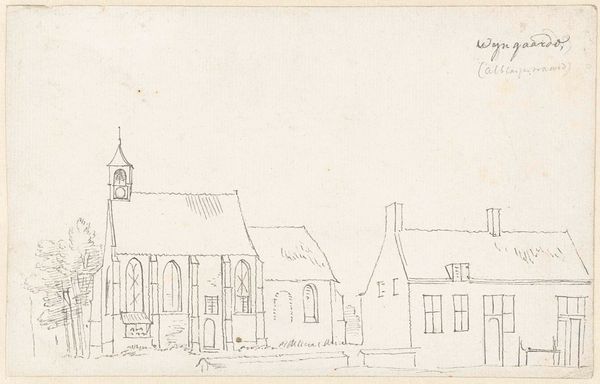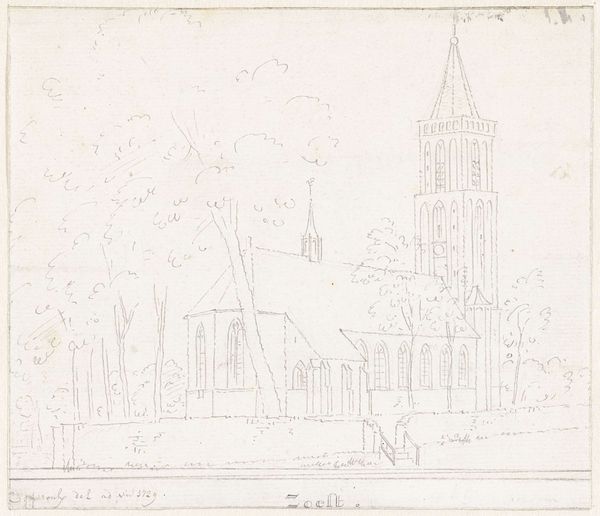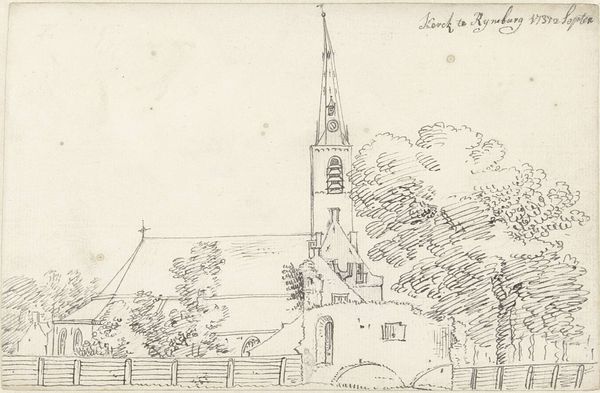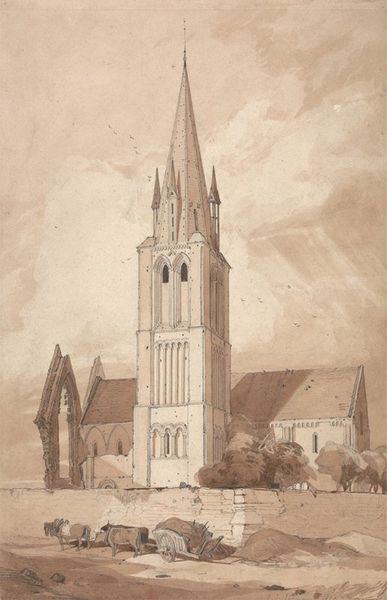
drawing, paper, ink, pen, architecture
#
drawing
#
quirky sketch
#
dutch-golden-age
#
mechanical pen drawing
#
sketch book
#
landscape
#
paper
#
personal sketchbook
#
ink
#
idea generation sketch
#
sketchwork
#
pen-ink sketch
#
pen work
#
sketchbook drawing
#
pen
#
storyboard and sketchbook work
#
architecture
Dimensions: height 131 mm, width 206 mm
Copyright: Rijks Museum: Open Domain
Curator: Here we have Cornelis Pronk's "Grote of Jeroenskerk in Noordwijk-Binnen," a pen and ink drawing on paper, believed to have been created sometime between 1701 and 1759. What's your first impression? Editor: It's deceptively simple. At first glance, it's just lines, but the more you look, the more the structure seems to emerge from the page, almost like it's being built as we watch. I find myself thinking about the act of observation itself. Curator: Indeed, Pronk, a significant figure in Dutch Golden Age art, was commissioned for topographical drawings. This piece showcases the Grote of Jeroenskerk, offering insight into the importance of detailed architectural documentation and its social impact. The church obviously was an anchor in the community of Noordwijk-Binnen. Editor: And it invites us to consider how religious spaces functioned within the Dutch Republic, both spiritually and as centres of power. Churches were not just houses of worship. How might this structure have played a role in defining the town’s identity? Curator: Pronk’s technique here, primarily through linear precision, speaks volumes about the demands of accurate representation in that period. The controlled hand allowed him to deliver detailed accuracy, and that speaks to the expectations of his patrons in commissioning architectural images like this. Editor: I'm intrigued by what isn’t shown. What does this conscious omission of details reveal about the selective nature of historical narratives, particularly about the lives lived around this building? It feels like we're seeing a stage set devoid of its actors. Curator: The clean lines and minimal shading almost depersonalize the scene, and some may argue this piece reflects the increasing secularization within Dutch society during the 18th century, placing a premium on verifiable truth in imagery. Editor: Perhaps, or maybe it reflects an attempt to distill the essence of the structure, stripping away the noise to reveal the underlying framework, much like stripping away the layers of rhetoric to expose the power structures within. Thanks to Pronk's craftmanship we are given an interesting space for reflection. Curator: Indeed. It makes us consider the socio-political roles art plays. Editor: Absolutely, and consider what these representations omit. It's always about filling the gaps, or trying to.
Comments
No comments
Be the first to comment and join the conversation on the ultimate creative platform.
